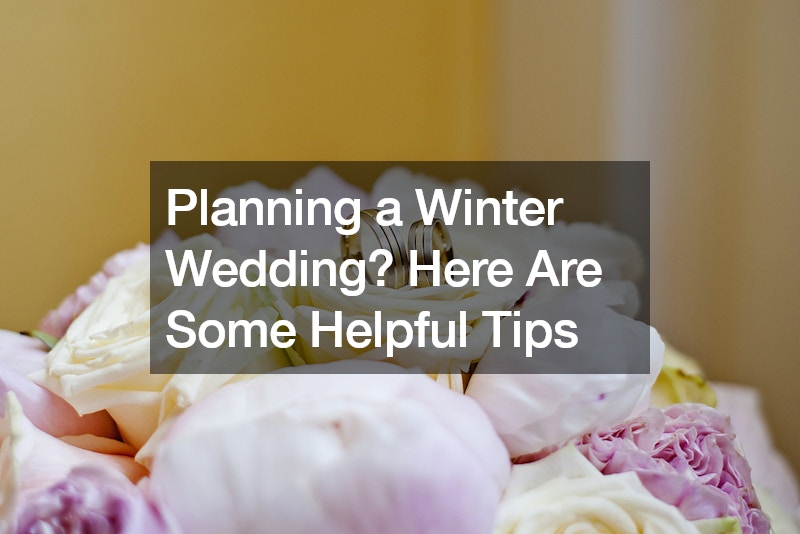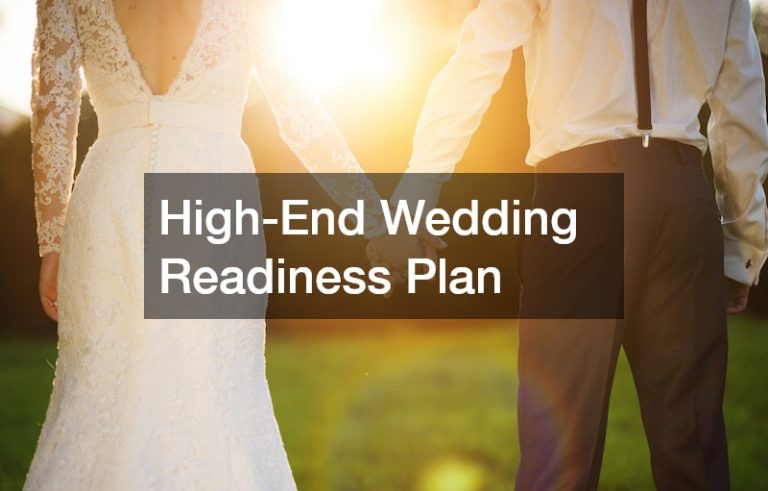Winter weddings can be enchanting affairs, with the crisp air, potential for snowfall, and cozy atmospheres adding a magical touch to the celebration of love. However, they also come with their own set of challenges that need careful consideration during the planning process. From weather concerns to attire choices and everything in between, here are some helpful tips to ensure your winter wedding is a smashing success.
1. Weather and Location
Weather plays a pivotal role in the success and comfort of a winter wedding, making it a crucial factor to consider throughout the planning process. While envisioning a picturesque snowy landscape or dreaming of clear, crisp skies is part of the charm of a winter wedding, it’s essential to prepare for all potential weather scenarios to ensure a seamless celebration.
When choosing a location, accessibility for guests should be a top priority, particularly if icy or snowy conditions could impact travel. Choose a venue that is easily reachable and assess the condition of roads leading to the location, especially if many guests will be traveling from out of town. If there’s a possibility of challenging weather conditions, such as icy roads or heavy snowfall, opting for a winter wedding venue with on-site accommodations can provide peace of mind and minimize travel concerns for both you and your guests.
2. Costs
Winter weddings are frequently viewed as the “off-season,” leading many couples to assume that they will automatically come with reduced costs. While this can be true in some cases, it’s crucial not to overlook potential expenses that may arise, particularly around popular holiday dates. Venues and vendors often have high demand during these times, leading to premium prices for booking.
However, despite the possibility of increased prices for certain services, there are still opportunities to find savings in other areas. For instance, some venues may offer off-peak discounts or special packages for winter weddings to attract couples during quieter months. Additionally, vendors may have more flexibility in their schedules during the winter season, allowing for the negotiation of prices or custom packages that suit your budget.
3. Attire Choices
Dressing appropriately for a winter wedding is essential for both the couple and their guests. Consider incorporating warmer fabrics like velvet or opting for thicker layers to stay comfortable in chilly temperatures. For outdoor ceremonies or photo sessions, provide options like shawls or faux fur wraps to keep everyone cozy. And don’t forget about footwear; choose shoes with good traction to navigate potentially slippery surfaces safely.
4. Guest Comfort
While winter weddings can be incredibly beautiful, the cold temperatures can quickly become uncomfortable for guests, impacting their enjoyment of the celebration. Effective communication with guests is key to managing expectations and ensuring they come prepared for the weather. Encourage them to layer clothing, wear warm outerwear, and bring items like scarves, gloves, and hats to stay cozy throughout the day.
In addition, consider providing amenities to help guests combat the cold. Hand warmers, blankets, or shawls can be thoughtful touches that demonstrate your care for their comfort. Placing these items strategically at the ceremony site or reception venue ensures they are readily available for guests to use as needed.
For outdoor ceremonies or receptions, renting space heaters is a practical solution to keep guests warm and comfortable. Space heaters can be strategically placed throughout the venue to provide additional warmth, especially during colder evenings or if there’s a chance of snowfall.
5. Lighting
With shorter days and limited daylight hours during the winter months, lighting becomes an important consideration for your wedding. Whether you opt for a daytime celebration or embrace the cozy ambiance of an evening affair, ensure adequate lighting for both indoor and outdoor spaces. Consider incorporating holiday lights or candles to add warmth and ambiance to your venue.
6. Holiday Considerations
Planning a winter wedding around the holidays can add an extra layer of magic to your special day. However, it’s essential to consider potential conflicts with guests’ holiday plans and budget accordingly for any seasonal price increases. Embrace the festive spirit by incorporating holiday-themed decor or festive touches into your wedding design, but be mindful of overwhelming your guests with holiday obligations.
7. Color Palette
Winter weddings offer a blank canvas for creative color palettes, whether you prefer rich jewel tones or soft, muted hues. Consider the natural surroundings–white snow, greenery, and bare branches–and choose colors that complement the season. From deep burgundies and emerald greens to soft blues and blush pinks, there are endless possibilities to create a beautiful winter-inspired aesthetic.
8. Photography Timing
Finally, consider the timing of your wedding ceremony and photography sessions, especially if you’re hoping to capture outdoor photos in natural light. With early sunsets and limited daylight hours, planning a first look or scheduling photos before the ceremony can ensure you make the most of the available light. Be flexible and prepared to adapt to changing weather conditions to capture those magical winter moments.
To conclude, planning a winter wedding requires careful consideration of weather, attire, guest comfort, lighting, holiday considerations, color palettes, and photography timing. By addressing these factors thoughtfully and proactively, you can create a memorable and magical celebration that embraces the beauty of the season. With proper planning and attention to detail, your winter wedding can be a dream come true for you and your loved ones.
.







